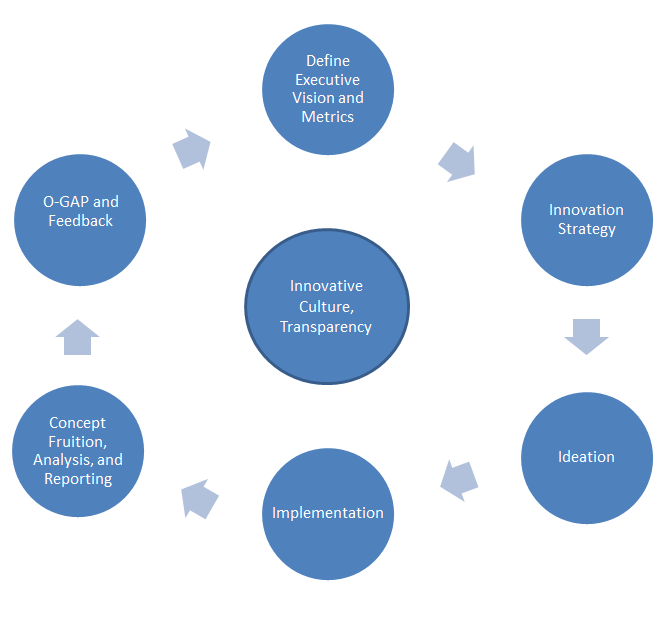In my third post of this series, the creation and management of the ideation process was discussed. The next step is make the ideation process and culture changes business as usual.

Make the Ideation Process and Culture Changes Business as Usual.
One of the most demoralizing aspect staff face is senior organizational leadership that does not listen to ideas and rarely appears to make real change. This results in a perception that senior management is more interested in empire building and self-protection than taking risks inherently associated with ideation.
Because perception is reality; the most critical element of becoming an innovative organization is what occurs after good ideas have come about and have started down the path to business fruition. In a holistic vista the end game is for the organization to transform into a truly innovative entity. To achieve this objective; the ideation and innovation outlined in the preceding posts needs to become ingrained into the organizational culture.
However, this only works if all the pieces become business as usual and the work flow is dynamic and transparent. Therefore, the last step in creating an innovative culture requires information to be reviewed on a constant basis with adjustments made as conditions and technology change.

The Operational Gap (O-Gap)
In its most simplistic form the O-Gap is the review of what is working and what is not working. It is the final opportunity to determine how the innovation framework is best operationalized and optimized. Things that are working may be targeted for tinkering and things that are not working are removed. It is important to note that O-Gap analysis includes both people and processes.
You can see in the chart above that the entire innovation process is much like any other work flow. After the vision has been defined and a mechanism has been set in place, a good organization will constantly review and tweak its performance. Once the review process is in place and the cycle has been repeated a couple of times, your organization will be positioned to stay ahead of the competition.
It is important to understand that getting the process right takes time. It make take a couple of years before the intended innovation environment is established.
Next Post Subject: Perception and the Ideation Process
The fifth and final post in this series will summarize the takeaways of the series How to Create an Innovative Environment in a Dynamic Organization. At the end of the series a full downloadable version of How to Create an Innovative Environment in a Dynamic Organization will be available in the Entrepreneur’s Corner
Previous post in this series are:
How to Create an Innovative Environment in a Dynamic Organization Part 1
Components of an Innovative Vision
Ideation in an Innovative Organization
